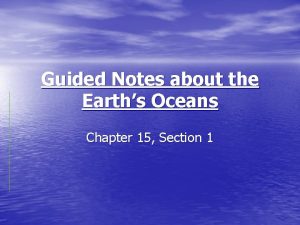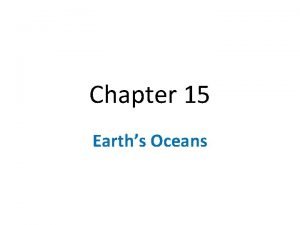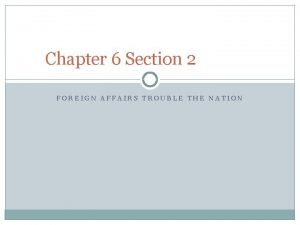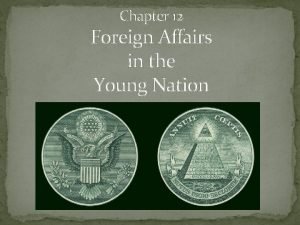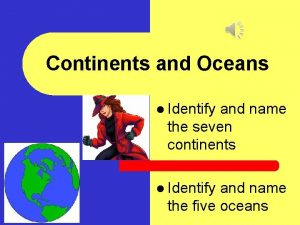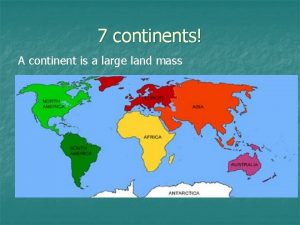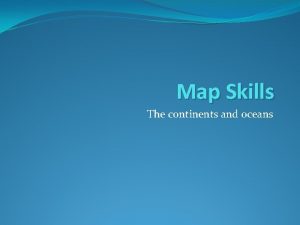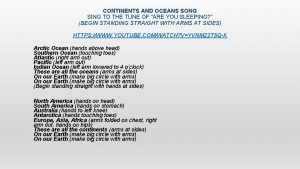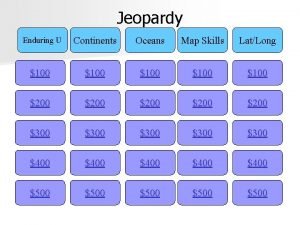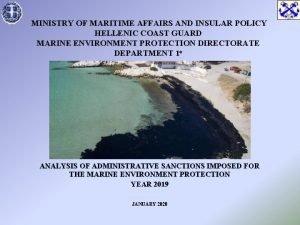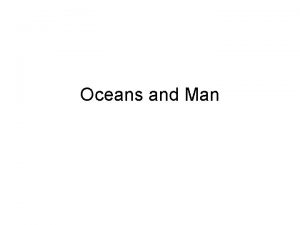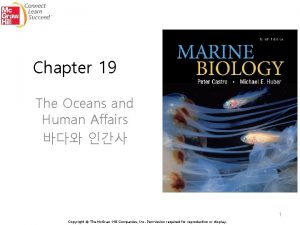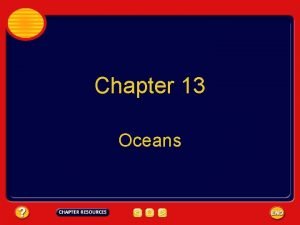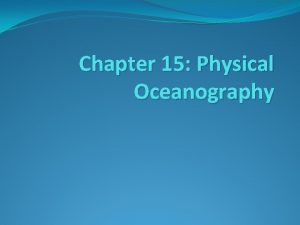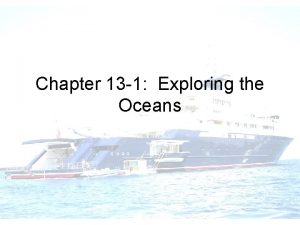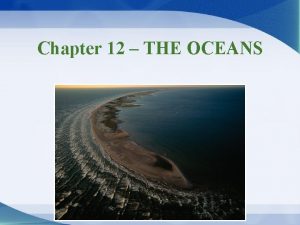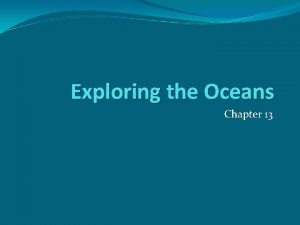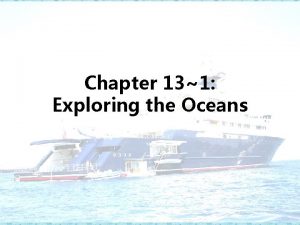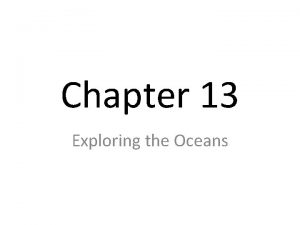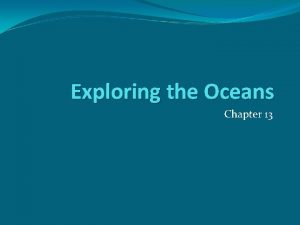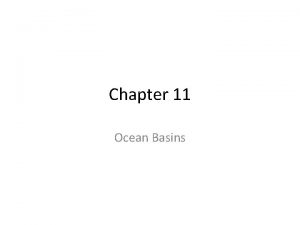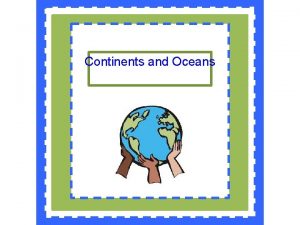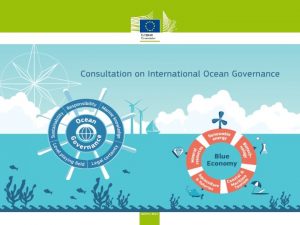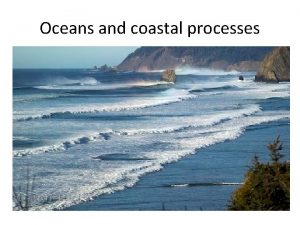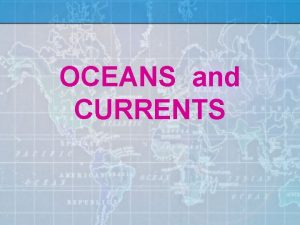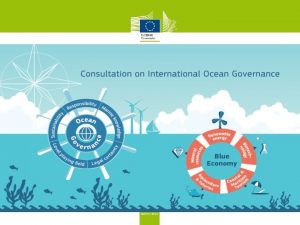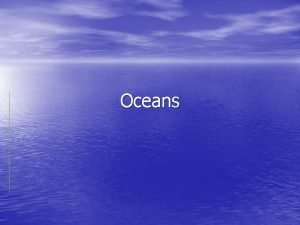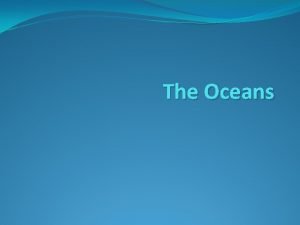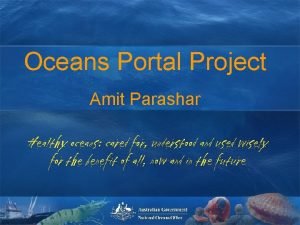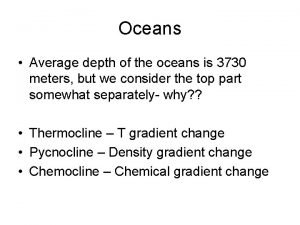Chapter 19 The Oceans and Human Affairs 1
























- Slides: 24

Chapter 19 The Oceans and Human Affairs 바다와 인간사 1 Copyright © The Mc. Graw-Hill Companies, Inc. Permission required for reproduction or display.

Chapter Opener


Figure 19_01

Figure 19_02

Ancient Oceanic Explorers • Ancient oceanic explorers include: – Arab sailors who sailed across the Indian Ocean – Vikings sailing across the North Atlantic – Polynesians sailed the Pacific Ocean – Chinese sailors sailed Indian Ocean and may have reached Pacific shores 6

Figure 19_03

8

European Explorers • Quest to discover new lands was pioneered by the Portuguese • They sailed around the tip of Africa to India by the late 15 th century • Columbus “discovered” the New World in 1492 (earlier voyages by the Vikings to the New World had never been shared) • Between 1480 and 1780, explorers from all over Europe sailed all over the world with few coastlines left explored 9

Other Exploration • England, Netherlands and Portugal emerged as leading nations during the modern time due to their sea trade and power • “Those who rule the sea, rule the land” became the prevailing motto of the day 10

Maritime Cultures • Maritime cultures are defined as having an intimate relationship with the sea • Example of traditional maritime cultures: Native Americans from Southern Alaska to Northern California – This culture was dependent on salmon, marine mammals and shellfish – This culture recognized and followed migration patterns – Marine life was basis for religious beliefs 11

Maritime Cultures • Some maritime cultures still exist such as: – Bajaus (바자우) or “sea gypsies of the Philippines and Borneo – Kuna Indians of the Caribbean coast of Panama 12

Figure 19_08

Figure 19_05

Figure 19_10

Modern Uses of Ocean • Shipping (this is still the cheapest way to transport large quantities) • Tourism • Recreation 휴양 (whale-watching, snorkeling, diving, sailing, water-skiing, etc) • Food – fish, shellfish, kelp, etc. 16

Protecting the Future • The ocean is under constant threat from pollution, global warming, sea level rise, habitat destruction, overfishing and other dangers • To help protect oceanic resources, a treaty was developed in 1982 called the United Nations Convention on the Law of the Sea (UNCLOS) 유엔해양법협약 17

Protecting the Future • This treaty has several provisions: – Establishment of the Exclusive Economic Zone (EEZ) that extends a nation’s economic interests 200 nautical miles from the coast – Establishment of free passage through waters 12 miles or more from a nation’s shores – Establishment of unimpeded surface and submarine travel through straits within the territorial sea of more than one nation – 영해, 배타적경제수역, 자유통행(무해통항권), 공해 18

Protecting the Future • United Nations Conference on Environment and Development 유엔환경개발회의 (리우정상회담, 생물다 양성협약) – This was developed in 1992 as an agreement to preserve biodiversity • While some progress has been made, additional protections are needed to ensure the long-term health of the oceans and its inhabitants • 수중문화유산의 보호회의(Convention of the Protection of the Underwater Cultural Heritage) 19

Text Art 19_01

UNESCO Convention • All traces of human existence underwater which are one hundred years old or more are protected by the UNESCO Convention on the Protection of the Underwater Cultural Heritage. (http: //www. unesco. org/new/en/culture/themes/underwatercultural-heritage/) • This convention aims at preventing the destruction or loss of historic and cultural information and looting. • It helps states parties to protect their underwater cultural heritage with an international legal framework. • UNESCO Convention on the Protection of the Underwater Heritage (http: //www. youtube. com/watch? v=ao. NV 8 t. RVRqo)

http: //www. unesco. org/culture/en/underwater/pdf/UCH-Manual. pdf


 Human impact on oceans
Human impact on oceans Human impact on oceans
Human impact on oceans Chapter 5 glaciers oceans and landscapes
Chapter 5 glaciers oceans and landscapes South carolina human affairs commission right to sue
South carolina human affairs commission right to sue Sc human affairs commission
Sc human affairs commission Chapter 15 earth's oceans study guide answer key
Chapter 15 earth's oceans study guide answer key Chapter 15 earth's oceans
Chapter 15 earth's oceans Human needs and human development
Human needs and human development Chapter 8 human needs and human development
Chapter 8 human needs and human development Chapter 6 section 2 foreign affairs trouble the nation
Chapter 6 section 2 foreign affairs trouble the nation Chapter 12 foreign affairs in the young nation
Chapter 12 foreign affairs in the young nation Foreign affairs chapter 15
Foreign affairs chapter 15 Outline map of continents and oceans
Outline map of continents and oceans Slidetodoc.com
Slidetodoc.com Names of the continents and oceans
Names of the continents and oceans Label the world's 5 oceans
Label the world's 5 oceans What are the 7 continents and 5 oceans
What are the 7 continents and 5 oceans Continents and oceans map
Continents and oceans map Continents and oceans
Continents and oceans Continents and oceans jeopardy
Continents and oceans jeopardy Continents and oceans jeopardy
Continents and oceans jeopardy Public affairs and religious liberty
Public affairs and religious liberty Harvard university alumni affairs and development
Harvard university alumni affairs and development College of health and public affairs ucf
College of health and public affairs ucf Ministry of maritime affairs and insular policy
Ministry of maritime affairs and insular policy





